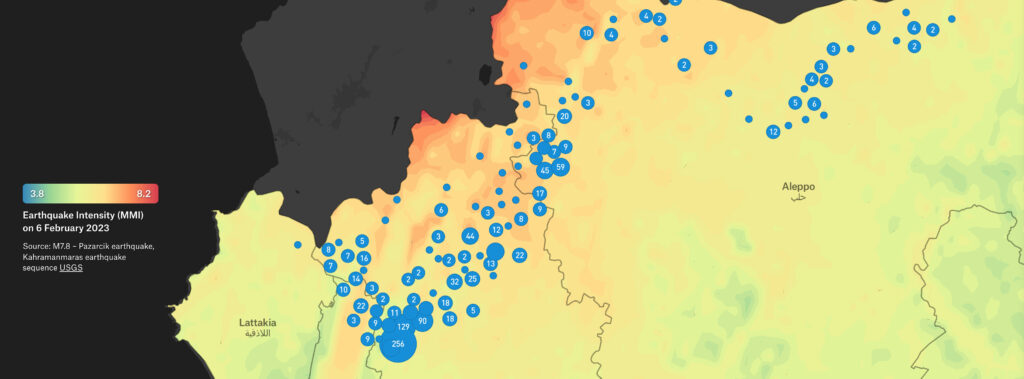Interactive map documents Syrian earthquake rescue operations alongside emergency airstrike response

On February 6th 2023, a devastating earthquake hit areas of Syria and southern Turkey leaving an estimated 55,000 people dead. In northwest Syria, the White Helmets, also known as Syria Civil Defence, deployed their volunteer first responder teams – rescuing at least 2,950 people from under the rubble and recovering the bodies of more than 2,000 others.
White Helmets teams have since been working on reconstruction efforts, including by clearing roads, facilitating community access and providing essential humanitarian services. These efforts have been challenged by continued hostilities, with airstrikes hitting communities already vulnerable from both the earthquake effects and the preceding years of protracted conflict.
In an effort to capture and quantify the on-going harm in Syria, particularly in areas already made vulnerable by the known intensity of the earthquake, Airwars and the White Helmets have teamed up to combine and consolidate data.
Our findings are detailed in the latest edition of Fragments, a new quarterly publication launched by the Explosive Weapons Monitor.
A summary of our findings:
This joint project is intended to draw attention back to a conflict that gets little international attention, despite the on-going intensity of attacks on civilians. It is also intended to show the benefits and effort of collaborating on critical documentation practices, even in the most intense of battlefields.
Methodology
Data points reflected on the map are incidents provided to Airwars by the White Helmets. Each incident is an instance where first responders were called to respond to explosive weapons use. Data provided included coordinates identified by on the ground response teams, as well as descriptions of the types of operation (such as air or artillery strike), the date, and a short description of the harm caused (such as fatalities or infrastructure damage).
Attribution of the strikes was also provided by the White Helmets, based on an assessment of aircraft use and direction of flight based on areas of control. All attribution should be treated as indicative only, given the complexity of joint operations and lack of transparency around strike reporting by all belligerents. Airwars has written about this in more detail here.
Airwars is continuing to assess each 2023 incident in line with our own casualty recording methodology, and has already published 105 cases reported in earthquake-affected areas on our website – totalling some 98 civilian deaths from alleged Russian strikes alone.